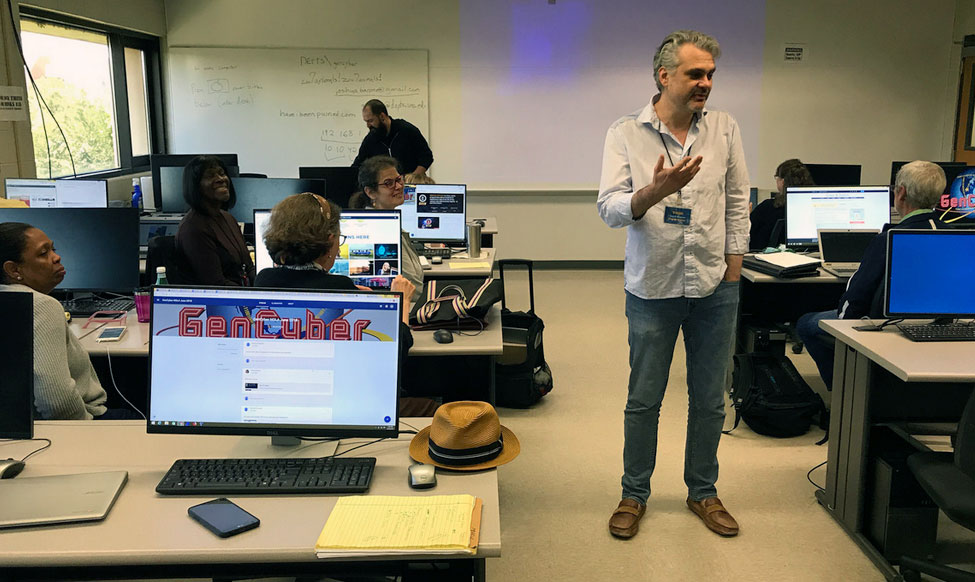
UNO has the strongest Cyber Security program in the region and is designated as a National Center of Academic Excellence (CAE) in Cyber Security Education (CAE) and Research (CAE-R) by the National Security Agency (NSA) and the Department of Homeland Security (DHS)—the only university holding these designations in the State of Louisiana. Faculty and students in the IA program at UNO work together on cutting edge problems involving reverse engineering malicious software, developing better digital forensics tools to help investigators recover data and solve computer crimes more efficiently, and creating new strategies for battling computer viruses.

Research and instruction are carried out in two state-of-the-art facilities: The UNO Cyber Center (UNOCC) and the Networking and Security Laboratory (NSSAL). These labs provide workstations with an extensive array of commercial and open source software, including IDA Pro, AccessData’s Forensic Toolkit, and zynamics BinDiff and BinNavi, to expose students to the same tools that IA professionals use in their day-to-day jobs. All of our IA classes contain extensive laboratory components…you will do IA, not just sit and listen to lectures.
Opportunities
Cyber Security professionals are in great demand in a wide range of jobs in the private sector, law enforcement, and in government. Digital forensics experts are employed to recover and analyze digital evidence for civil litigation, in criminal cases, and to support homeland security. To perform digital investigations, they rely on advanced knowledge of forensic techniques, operating systems, filesystems, and networking.
Network security experts design secure networks and protect these networks from ever-evolving threats, using a variety of mechanisms, including firewalls, intrusion detection systems, and penetration testing.
Reverse engineers analyze malware to understand how it operates, how to recover from its effects, and how to construct defenses to prevent future infection. They rely on extensive knowledge of operating systems internals, assembler, and static and dynamic analysis tools for reverse engineering.
Software engineers with a foundation in IA design and implement secure software using techniques that increase the resilience and reliability of both operating systems and application software. This requires deep understanding of programming languages as well as IA.
Objectives of Cyber Security Concentration
- Prepare students for the job market by providing a solid foundation in all aspects of Cyber Security.
- Give students practical experience with industry standard tools, frameworks, and investigation processes.
Highlights of Cyber Security Concentration
Reverse Engineering: Learn to analyze malware binaries, determine what a given malware does, and how it does it. Develop an understanding of operating system internals and how they are exploited by malware. Learn how modern malware obfuscates its presence and activities. Analyze malware ranging from simple examples that targeted MS-DOS through to modern examples that targeted Microsoft SQL Server and Windows.
Operating Systems Internals: Learn how operating systems are designed and implemented by examining code from modern Windows, Linux, and Mac OS X systems. Learn how trade-offs between security and performance affect the design choices of operating system programmers. Develop the skills to recognize flawed design choices and careless programming errors that can be exploited by an attacker to gain control of a system, and learn how those problems can be remedied.
Digital Forensics: Introduce the theory and application of computer forensics, an important area of computer security concerned with the preservation and recovery of digital evidence. Topics include: types of digital evidence, obfuscation methods used to hide digital evidence, such as steganography and encryption, tools for data preservation and recovery, techniques for ensuring data security, and legal issues in the preservation, recovery, and presentation of digital evidence.
Network Security: Practice the development and application of tools and techniques for securing computer networks. Topics include: basic issues in network security, network intrusion detection, honeypots and honeynets, network forensics analysis, physical security models, authentication and access control mechanisms, application and operating system level security, malicious software, and encryption; including private- and public-key encryption methods.
Student Learning Outcomes
Student Learning Outcomes specify what students will know, be able to do, or be able to demonstrate when they have completed a program of study.


